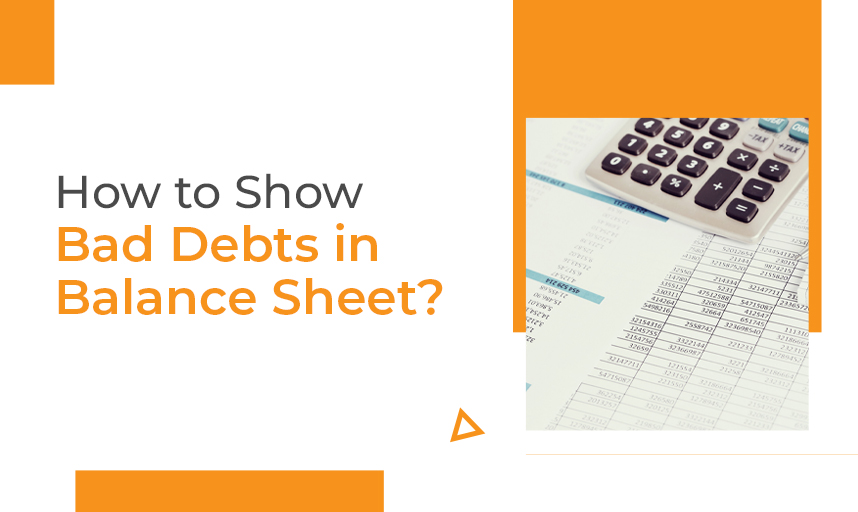How to Show Bad Debts in Balance Sheet?

Unfortunately, bad debts are a part of running a company. No matter how cautious you are when giving customers credit, some will inevitably default on their payments. It’s crucial to include the loss in your financial accounts when this occurs. We’ll go over how to display bad debts on your balance sheet in this article.
What are Bad Debts?
A bad debt is one that the creditor writes off as a loss because it is believed to be uncollectible. Usually, despite the creditor’s best efforts to collect, a consumer refuses to pay an unpaid debt. Bad debts are accounted for in the balance sheet as a reduction in accounts receivable and on the income statement as a cost.
How to Account for Bad Debts in Your Balance Sheet?
We have discussed two methods for accounting for bad debts in your balance sheet: the direct write-off method and the allowance method.
Direct Write-Off Method
The direct write-off method is the simplest and most straightforward way to account for bad debts. Under this method, the bad debt is recorded as an expense when it is determined to be uncollectible. The bad debt expense account is debited, and the customer’s accounts receivable account is credited. This reduces the number of accounts receivable and increases the amount of bad debt expense on the income statement.
However, the direct write-off method has a significant drawback. It doesn’t accurately reflect the financial impact of bad debts on the company’s operations. This is because the bad debt expense is recorded only when the debt is determined to be uncollectible. As a result, bad debts may not be recognised until long after the credit was extended, distorting the company’s financial performance for an extended period.
Allowance Process
The allowance method is a more accurate way to account for bad debts because it estimates the amount of uncollectible debt and records it as an expense before the debt is actually written off. Under this method, a company establishes an allowance for doubtful accounts, which is a contra asset account that is deducted from accounts receivable on the balance sheet.
To establish the allowance for doubtful accounts, a company must estimate the amount of bad debts it expects to incur over a given period. This is typically based on historical experience and industry averages. The bad debt expense account is debited, and the allowance for doubtful accounts is credited. This reduces the net amount of accounts receivable on the balance sheet, which can help in accurately reflecting the company’s financial position. The allowance for doubtful accounts is debited, and then it is credited to the customer’s accounts.
Which Method Should You Use?
While the allowance method is more accurate, it requires more work to set up and maintain. It also requires regular reviews and adjustments to the allowance for doubtful accounts to ensure that it accurately reflects the company’s financial position.
Despite being simpler and easier to maintain, the immediate write-off approach does not accurately reflect the company’s financial situation. As a result, the allowance technique is typically regarded as the preferable option for bad debt accounting.
Conclusion
Managing a company’s finances requires accounting for bad debts. Even though bad debts can be annoying, understanding how to correctly account for them can help you manage your cash flow and make smarter financial decisions. The allowance method provides a more accurate picture of a company’s financial position, but the direct write-off method may be more suitable for smaller companies with fewer accounts receivable. If you require any assistance with your bad debts, you can rely on KPG Taxation which is a leading taxation company in Australia. You can trust their tax specialist for all your taxation needs.

Focus On Growing Your Business, Leave The Accounting On Us!
- Income Tax : File your taxes & get the best claims & returns.
- Accountancy : Hire expert accountants to manage your transactions.
- Bookkeeping : Let us handle your record books and expense reports.
- Business Advisory : From company set-up to payroll, we handle it all.



